My Optimized Sub-3 Hour Marathon Training Routine, Including the Proof it Works: 2:58:44 at Bienwald Marathon

Over the past four years, I’ve written a few times about my ongoing quest to beat the magical three hours barrier in a marathon race. This time, the big spoiler comes right in the beginning – I did it! Since setting this personal goal and giving myself a whole decade to reach it, almost exactly four years have passed, meaning I now get to celebrate for a full six years – not bad, right?
But what is it that finally helped me reach this often coveted result of a Sub-3 Marathon?
In this post I’ll explain the journey towards it so you can learn what it might take, maybe adjust your own training, or just quench your general curiosity.
“I’ve got no time, just tell me what to do!”
For those of you who are just here for a quick solution or hit of inspiration, those who want to get the unexplained gist of it instead of knowing the full story, I understand you and I’ve got you covered. Here’s what to do, no context.
- You should have already achieved a 3:15h, or better, a 3:10h marathon result before.
- Run 80-100 km / 50-60 miles per week, nearly all of it at Zone 2 / 60-70% maxHR “talking pace”.
- One weekly slow long run which takes (almost) as long as the 3h marathon race.
- One weekly fast and anaerobic intervals session like the popular 6x 3:00 minutes at 3:45 min/km / 6:00 min/mi speed with easy 2:00 minute floats in between. Increase over the weeks from 6 to 8 repeats.
- Add in another weekly VO2max increasing session on the bike to build up speed without the joint and muscle impact, e.g. three sets of 10x 40 seconds at 120% FTP with 20 seconds easy in between.
- No weekly threshold or race pace, only add these if you feel like it and have the spare energy.
- Do this for 6-8 weeks or more.
- Take your sleep and nutrition seriously, avoid alcohol, do strength exercises.
Now that we’ve got that out of the way, let’s start with the full story!
Interested in more future knowledge drops?
Subscribe to the free newsletter here:
You’ll never ever receive spam email and you can unsubscribe at any point.
-
This was one of the best articles I've read so far in telling about a race. I couldn't put it down. Your details were so awesome. You made New York just come alive.
-
Great review, enjoyed reading it and recognize lots off related subjects and hurtles. I’m amazed by all your running and races well done.
-
Great article! I've read so many long blogs only to get bored in the middle as I suffer terribly from ADD and move on to other things. Yours has been one of few that held my attention all the way to the end.
-
Your good humor and ease in telling stories make this blog a really cool space. Nice review.
-
Amazing effort Tim, well done! Thank you for taking the time to write down your thoughts, feelings and memories from the event. There’s always something to learn from your posts and this one was no exception!! Another cracking read.
-
What a ride! Surely the race, but also reading about it. Thanks for taking the time to write up such a detailed report, almost feel like I was there.
👣 First, Where Did I Come From?
I started running around 2009, roughly 15 years ago. My first full marathon took place in 2010. Then I just continued to run marathon after marathon, from a couple to a handful to around a dozen per year. I never did any speed training, everything was spent in “Zone 2”, at so-called talking pace. But the amount of kilometers and the consistency added up over the years so I finally landed on a 3:26 hour marathon in 2017 without ever following any specific training plan or doing a single classic intervals session.
That’s the first lesson and I’m not the first to have learned it. You can become faster by running slowly and just going by what feels good.
My first real training plan was the legendary and tough “Peter Greif’s 8 Week Countdown to Marathon” which I followed closely in 2019 for a 3:15h goal time, but I slightly missed that due to catching a cold in race week and finished Frankfurt Marathon that year in 3:17 hours. There, the concept of weekly intervals, long runs, and marathon goal pace workouts was introduced to me. I certainly enjoyed the process and witnessing that it worked and feeling my abilities improving quickly.
Then, at the beginning of 2020, I set the bespoke goal for the decade of the 2020s. To finish a marathon in less than three hours would make me faster than about 98% of all global marathon finishers. With a whopping 17 minutes to shave off my current record, it was insane at that point. It seems like it’s exponentially harder the faster you get. But remotely possible at the same time! Or so I thought. The reactions from people around me were certainly quite diverse and ranged from “You stand no chance at all, better quit before you start.” to “I believe in you and here’s some advice!” – you can guess which type I preferred.
That kicked it off.
At first it seemed the pandemic would become a roadblock, but the consequences for my running were quite positive. With no races around, I just did whatever I felt like, and that included running a lot of experimental challenges, culminating in a naturally improved base fitness and a self-timed marathon on a track on my birthday, the 28th of July in 2020, reaching the 42.195 kilometers / 26.2 mile mark after 3:09 hours. An unofficial personal best by quite a margin!
In 2021, except for some 3:05h marathon goal pace workouts with my friend Philippe and a new unofficial half marathon PR of 1:29:58, not much happened on that front due to an unfortunate injury that wasn’t running related, so I enjoyed some slow trail ultramarathon races later in the year.
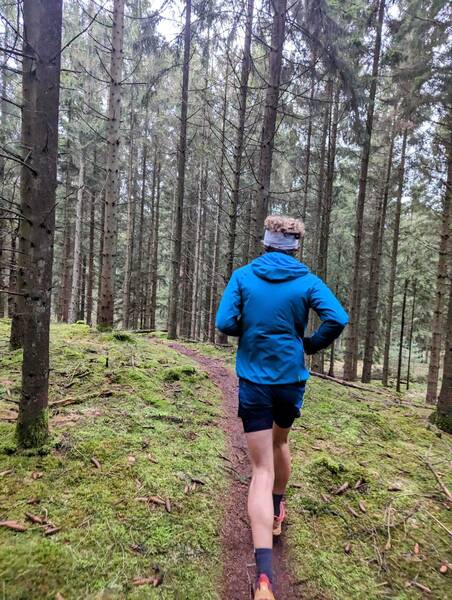
Then, 2022 saw my most intensive and effective effort towards Sub-3 yet. I started the year with a new training plan which I got from JP Hendriksen, and which fit me personally very well even though it was meant for runners who have more speed experience at that point than I had.
JP’s plan was different in that it had everything the other plans have, but with the exception that he used nearly no marathon goal pace workouts at all. It was all about the fast and short 800 meter intervals and the slow and easy long runs! I chose to incorporate some more kilometers at race pace in the later stages on my own.
This was going to be my first serious attempt at Sub-3.
The result was a 3:00:40 race at Hamburg Marathon in April 2022. So close! There was just nothing more left in me, it was absolutely an all-out effort.
Experimentation continued. Something was clearly missing, maybe more race pace workouts? So I tried it for a second time, making up a plan on my own using my newly found experience, and failed a lot harder at Cologne Marathon in October of 2022, making it two thirds of the way (28km / 17mi) at goal pace until I just couldn’t keep up any more and jogged the remaining 14k’s / 9mi to the finish line and landed on 3:23 hours. Many new lessons learned, as you can read about in that blog post. One of those lessons was that it’s okay to ask for help.
Enter Mathias, my buddy and endurance training nerd. He had offered help a bunch of times and now I finally accepted.
Beginning in 2023, he planned my training around the weird constraints I offered and we moved through this. It was great having an accountability partner in him. He knows me well, although obviously not as well as I know myself, but still it was great to have an outside perspective on what I’m doing here. The training plan he developed was quite clearly more on the hardcore side of things and especially the long runs incorporating race pace efforts where a huge strain on my energy, and, unhelpfully, my immune system. I got sick not once or twice, but three times during the twelve weeks, missing about a week of effective training each time. Not a good sign. Surely I can’t blame anyone but myself for this, I didn’t take note of the signs and tried to bounce back too quickly. My third serious attempt needed to get canceled and turned into a cough and sneeze fest at Hannover Marathon in April 2023. I was glad to be able to run a full marathon at all.
The self-doubts accumulated.
Am I destined to fail? Seems like it’s getting worse and worse if you just look at the results produced.
Maybe I just lack the talent and should give up the ridiculous goal?
Were the haters right, after all?
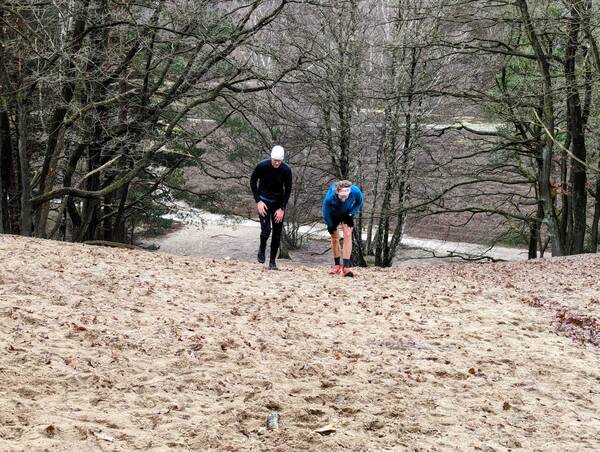
But then again, I did that 3:00:40 hours marathon back in 2022. It must be possible. At the end of my 30s, I am nowhere near too old for such a feat. And I had the almost-winning-recipe right there. Keep it simple.
I didn’t feel like a fast fall marathon in 2023, but rather like enjoying a multitude of marathon races without jeopardizing a concentrated training effort. It was the right decision, that year turned out awesome and culminated in the amazing New York City Marathon in November, where I ran a 3:18h without that much effort, enjoying the city and occasion as much as possible.
Starting in 2024, I planned to spend the next few months training for my fourth attempt at Sub-3.
📝 The New and Improved Training Plan
After recovering a bit from my slow and traditional 50k which I like to do on each January 1st, I got into it around two weeks after that.
My general plan was focused on Hamburg Marathon on April 28th, which provided me with 14 weeks of speed and endurance training starting mid January. This must do, I thought.
The end of 2023 consisted of nothing but Zone 2 training (i.e. “talking pace”), except for one single Hill Repeats session where I did three sets of seven 30 seconds uphill sprints followed by 60 seconds easy downhills. That’s great to build leg strength, but a single session won’t do too much. Apart from that, I did two slow solo marathons in the December snow.
What’s important to mention is I’ve been streak running for over two years by now, and I’m not stopping. Without exception, I’m running every single day, for at least one mile (1.6 km), but it’s very rare my daily runs are shorter than a 5k. That’s been my basis.
The new plan I came up with built mainly on my success with JP Hendriksen’s plan, which led me to that 3:00:40 finish two years ago. I changed two things: the weekly long runs in his plan were too short for my taste, and since speed is my main area of development, I incorporated the very effective VO2max intervals on the bike trainer my friend Mathias recommended. The term “VO2max” is used to refer to the maximum amount of oxygen the body can utilize. Increasing this by doing specific workouts brings the main benefits needed to improve running speed.
Other than that, I kept it all rather simple. Here’s a standard training week schedule, but keep in mind that this is specific to a Sub-3 hour marathon. If you’re looking to run one in 4:00 hours or 3:30, or just to finish your first one, your plan should look vastly different from this one.
Monday
Easy 8 km (5 mi) at talking pace of about 5:15 min/km (8:25 min/mi)
Tuesday
- VO2max Zwift Bike 3x 10x 40s/20s (explanation below)
- Followed by easy 5-8 km / 3-5 mi
Wednesday
Easy 10-12 km / 6-7 mi
Thursday
Easy 15-18 km / 9-11 mi
Friday
VO2max 3:00 min intervals with 2:00 min jog breaks, starting with 6 repeats, moving up to 8 over the weeks. Pace during the first weeks was around 3:45 min/km (6:00 min/mi), later more like 3:30 min/km (5:40 min/mi).
Saturday
Easy 5-8 km / 3-5 mi
Sunday
Long Run 32 km / 20 mi
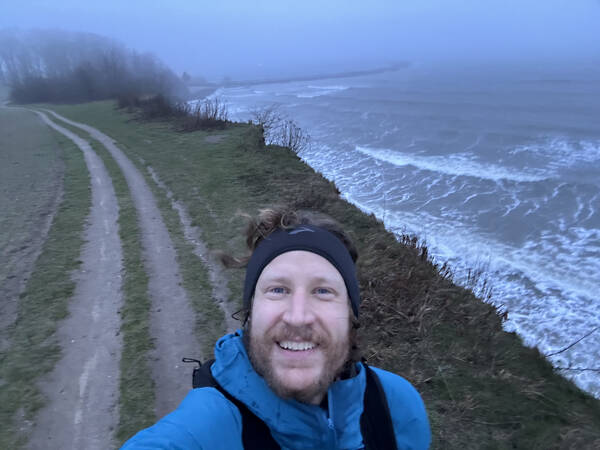
As you can see, there are no rest days. Days where I just run slowly for a good half an hour seem to be just as good for recovery as a rest day for me by now.
This schedule adds up to between 80 and 100 kilometers / 50-60 miles per week. The largest amount is done at slow Zone 2 pace, building and maintaining the base fitness, which is most important for many reasons, not least of all for injury prevention.
🔁 About the Running Intervals
The fast Thursday intervals are a standard in most marathon training plans, fairly often described as 800 meter intervals, two laps on a standard track. My friend Mathias convinced me to go with the flow of the times and change this to 3:00 minutes, because as you get faster you reach 800 meters in less time than three minutes, making the sessions less effective. The improvement comes from the amount of time spent at that high heart rate. Reducing that over the weeks because of increased speed diminishes the potential for improvement.
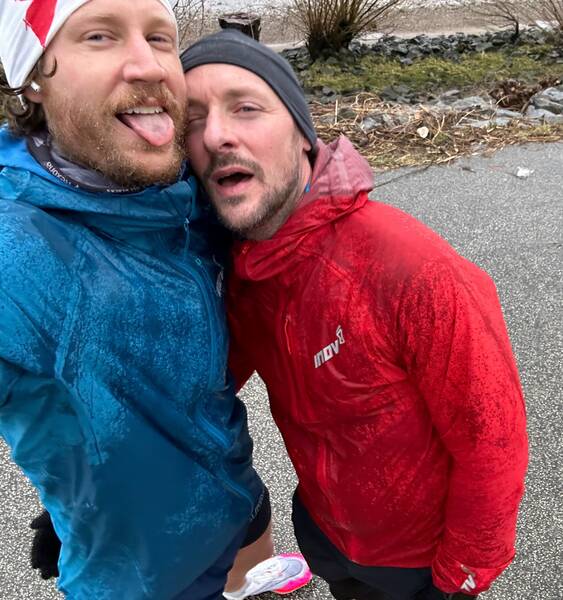
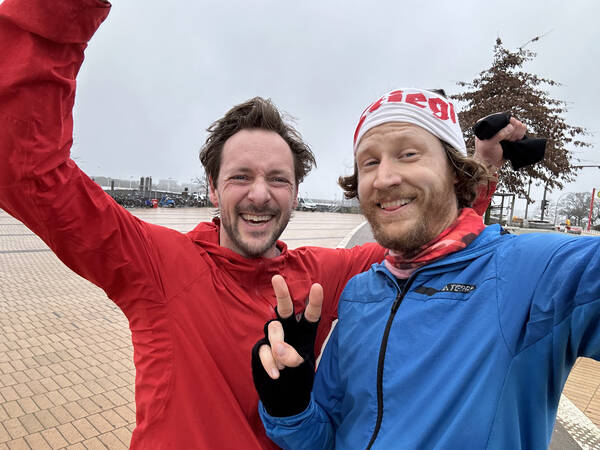
Over the course of the weeks, you would typically increase the number of those 3:00 minute efforts up by one per week. I started at 6, did that for a few weeks, and went up via 7 to 8. Others start at 4 and go up to 10. Some use shorter jog (or so-called “floating”) breaks between fast efforts, but the 2:00 minutes felt just right for me.
🚴 Why Cycling Helps Running
By doing another weekly session with a VO2max improvement focus, you can turn up the speed even more. The problem is that running a lot at high intensity has a limit at some point, as I regretfully learned back in spring of 2023. This is where the virtual cycling enters the game. On my Zwift bike, I can do almost that same cardio focused workout as the fast run intervals, but keep the impact on the rest of the body fairly low. Particularly on the joints, muscles, and immune system.
I’ve never had problems with my joints so far, but it’s certainly helpful to use some other leg muscles by riding the stationary bike at times to allow for evenly spread exertion. And the short-term negative impact of hard training on the immune system is well known, so in order to avoid riding on razor’s edge like last time I tried it and actually losing that battle and getting sick a bunch of times, this new and improved plan would hopefully reduce the risk significantly. Spoilers: It did. Never got sick once.
One of the most effective sessions on that bike, if you’re planning to increase your VO2max, is the one I did weekly. First, you find your FTP, that’s the Functional Threshold Power. It’s the amount of Watts you can generate on average over the course of 60 minutes at maximum effort. For me, that’s currently around 250 Watts. There are short tests to find out your number, no one needs to actually ride for a whole hour at maximum effort to prove it, thankfully.
After warming up for a few minutes, you enter your first set of three, each consisting of 10 repeats of 40 seconds at 120% that FTP, which for me is 300 Watts, followed by 20 seconds at easy 50% FTP, 125 Watts in my case. A nice and even 10 minutes per set, with five minutes of easy cycling between those.
The whole thing takes less than an hour and produces lots of sweat and happy endorphins, as well as a massive fitness boost.
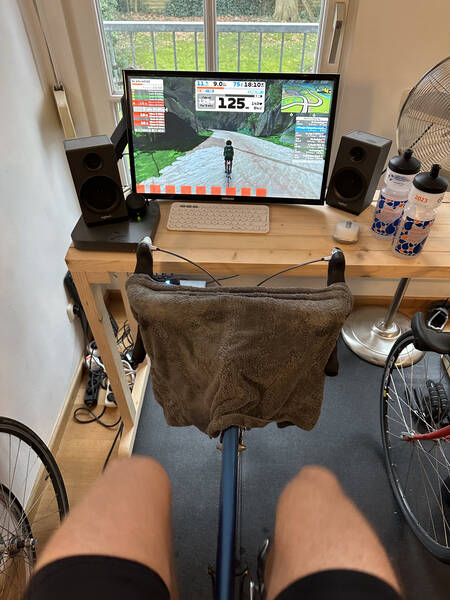
Another huge advantage of this session being so effective at a relatively low impact is it allows for continuing with a hard run training session on the following day already. There’s not much of a need to recover, as opposed to those 3:00 minute running intervals.
This only leaves the long run to be explained. Opinions here differ, but mine is that it should actually be long. Meaning, about as long as the goal marathon time – three hours in this case. Of course, the speed is relaxed, often defined as marathon race pace plus one whole minute per kilometer (ergo 5:15 min/km / 8:27 min/mi), but the time spent on the legs should be about the same. Some people disagree and say that less is more in this situation, but since I especially enjoy this type of workout and believe it’s necessary to explain to our bodies what we’re about to ask from it on race day, I’m not compromising here.
🙃 No Race Pace Workouts
Contrary to most training plans, I’ve eliminated race pace training for now. I think it was what tipped me over into sickness territory the last time, it was just too much for me to take each week. Of the three generally stated key sessions (fast intervals, marathon race pace, and long runs) I think it’s the least important one. The first to go if you had to choose. Spoilers again: I was right.
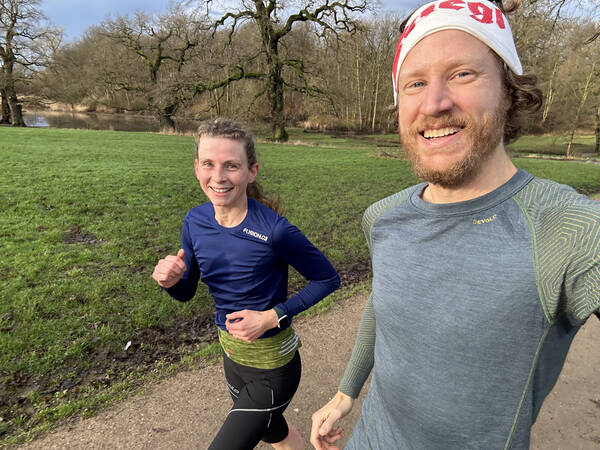
My general plan now is to do this without any race pace running for at least the first half of the training cycle, and then see if and how I’ll incorporate it.
This is a nice and simple plan. Now enter reality.
Sure enough, chances are slim that any training plan will be done 100% as formulated at the beginning. I would go as far as to say that it might even be a bad sign if it were. You can’t know how the body will adapt over the course of the weeks, you can only guess. And if you don’t change the plan according to new individual developments, you’re missing out on potential or even risking failure. Not to mention the countless factors of everyday life affecting each and every training plan actualized on Earth.
During the few weeks before my planned 12-week training plan start on February 5th, I just couldn’t wait and already started with the basic weekly program.
In those “pre-training” weeks I did two 30k long runs and three 20k long runs, one of those hilly. I started with the 3:00 minute intervals and did two of the six-repeat ones, and in the four weeks leading up to the start of the plan I accumulated four successful session on the Zwift bike, hitting those VO2max intervals in the bull’s eye.
Needless to say, that all brought me into a very good situation to begin with. It’s also a fair statement that this already was the real deal and not just pre-game fun.
Still, the arrival of February 5th meant business for me.
The first two weeks went flawlessly and reached an early high when I did the Virtual Tokyo Marathon on Saturday, 17th of February at home in Hamburg. Part of it was a buddy long run, part of it me trying to qualify for Tokyo in 2025, by then my last remaining race of the Six World Marathon Majors. A bit more than a standard long run, but at 3:40 hours not too far off.
Recovery worked so well that three days later I felt like a fast threshold 10k run. “Threshold” means the maximum pace and/or heart rate at which the cardiovascular system still works in an aerobic fashion and not piling up lactic acid so it becomes unsustainable. It’s a thin line and difficult to hit perfectly, but when done well it should leave not much of an impact on the leg muscles. It’s slightly faster than marathon race pace, so it’s important to avoid doing too much of this at the beginning, especially for me.
My 10k threshold session worked so well I even broke my previous personal best on the 10k. Although I felt fit before it, this was astonishing to me. Comfortably under the forty minute mark, at 39:19 the watch stopped.
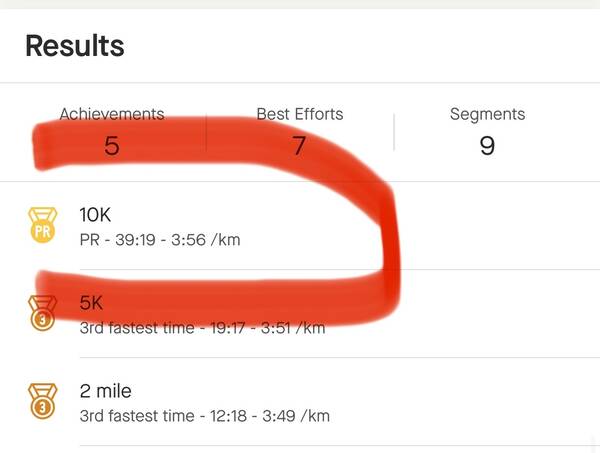
I feel great! This is working!
🌬️ Phase #2
The next two weeks from February 19th to March 3rd were again nearly perfect training weeks. The long runs were on point, lots of kilometers spent in Zone 2 (by doing more of the #EverySingleStreet project with my friend Patrick), the Zwift sessions helped, and I increased the running intervals via 7x to 8x the 3:00 minutes. Despite adding more intervals my speed over those improved yet some more.
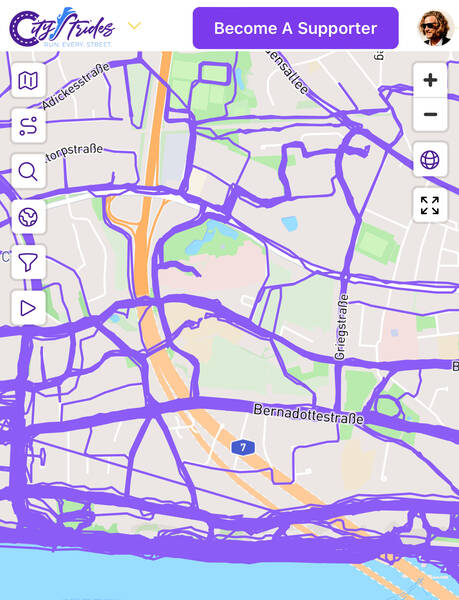
At the end of that forth full week of my training plan, I felt like doing the famous 90 minutes threshold session which JP Hendriksen had in his plan twice. This replaces a long run and since I didn’t really feel like a long run that week anyways and much rather enjoyed celebrating my newly achieved speed, it was good timing.
According to JP, you’re supposed to run these 90 minutes at a pace of 4:01 to 4:09 minutes per kilometer (6:25-6:40 min/mi). Compared to marathon race pace (4:15 min/km or 6:50 min/mi) that’s a bit faster, but it’s just half as long. As mentioned, these threshold workouts are helpful and recovery usually happens rather quickly.
So it turned out I wasn’t exactly removing the (near) marathon race pace workouts, but replaced them with even faster ones, done less often.
Could this be the winning recipe for me? You guessed it: Yes, it could.
By sheer luck, weather was wonderful as my nervous excitement for this particular session mounted. Just a bit of wind on my usual Elbe river banks East-West traverse.
I decided to make it as easy as possible and run fifteen minutes west along the flat river, fifteen back, and repeat that two more times. And it worked out so well, I landed on a 3:59 min/km (6:24 min/mi) average – I couldn’t even believe it myself! This meant a new unofficial personal best at the half marathon of 1:24:02 hours. Insane, when I think about where I came from.
Why did this all work so well?
Here are a few reasons which came to mind.
- Nutrition is on point currently. I’m still going with eating 95% plant-based and paying attention to taking in a good balance of macro- and lots of different micronutrients.
- My sleep is generally good and regenerative. I emphasize being in bed at half past nine each night so I can have enough sleep before getting up at 6:15 AM to manage the four kids’ routines before school.
- I switched apps and now use Fitbod for my daily strength exercises. It takes about fifteen minutes and never gets boring since every day is generated differently.
- Stress levels are lower since I sold my company at the end of 2023. Anxiety about meeting payroll played a role, down to downright panic attacks at times nearing the end. I’m so glad I’ve found a competent buyer and it continues on without me.
- Here’s the most obvious reason: This particular training is just a near optimal combination of different stimuli for my body.
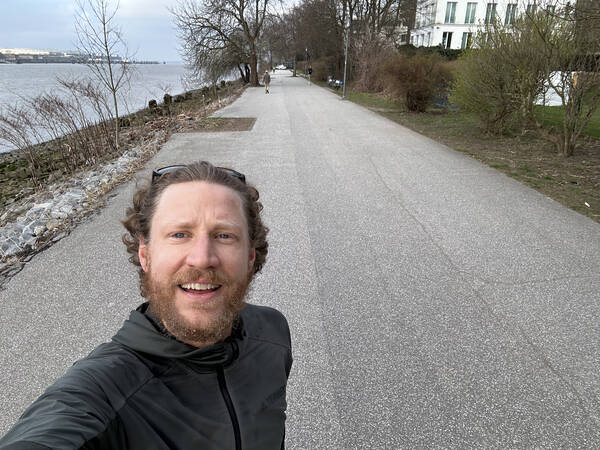
The training wasn’t too much, it wasn’t too little, it was right in the goldilocks zone. Several members of my family got sick over the cold and wet winter season, but I didn’t and was able to support them getting through it while also continuing my training. My guess is, the training actually played a role in my improved health and resistance to those bugs brought in by the kids.
It’s also been very helpful to do a lot of the sessions together with friends such as Philippe, Mathias, and Patrick. Nothing like fighting through those challenging intervals with someone to share the exhaustion and celebrations. And talking through a slow long run makes it twice as enjoyable, too.
All in all, during these weeks I spent between eight and ten hours doing sports. This isn’t more than I used to spend on it before selling the company and becoming a stay-at-home dad. It’s just one hour per day plus a bit more on weekends. No magic here. There were two weeks during which my energy levels and time management weren’t at one hundred percent, leading me to replace the Zwift bike sessions with shorter and easier ones. That’s been the only compromise.
Wait, this all sounds like it’s already over, aren’t we just at four weeks in of the 12-week core plan?
Yes, that’s right. But something clicked in me after that successful 90 minute threshold run. I was as elated and optimistic about Sub-3 as I’ve never been before.
Also optimistic and elevating: My future blog posts! 😉
Subscribe to the free newsletter here:
You’ll never ever receive spam email and you can unsubscribe at any point.
-
This was one of the best articles I've read so far in telling about a race. I couldn't put it down. Your details were so awesome. You made New York just come alive.
-
Great review, enjoyed reading it and recognize lots off related subjects and hurtles. I’m amazed by all your running and races well done.
-
Great article! I've read so many long blogs only to get bored in the middle as I suffer terribly from ADD and move on to other things. Yours has been one of few that held my attention all the way to the end.
-
Your good humor and ease in telling stories make this blog a really cool space. Nice review.
-
Amazing effort Tim, well done! Thank you for taking the time to write down your thoughts, feelings and memories from the event. There’s always something to learn from your posts and this one was no exception!! Another cracking read.
-
What a ride! Surely the race, but also reading about it. Thanks for taking the time to write up such a detailed report, almost feel like I was there.
Now, if you know me you’re not surprised to hear I had a few more full marathon runs planned leading up to the grand finale at Hamburg Marathon on April 28th. I figured, when run at easy slow pace they make for fine race practice. It has worked before.
For the end of week #5, I had a ticket for the notoriously fast Bienwald Marathon in the south Pfalz region town of Kandel, near Karlsruhe, an hour south of Frankfurt. It’s very small.
A tiny thought settled in my head and manifested itself.
What if I just went ahead and started this race not as an easy slow long run, but boldly at race pace and see how far I’ll get?
Worst that could happen I’ll blow up just like in Cologne in 2022, jog it to the end, and resume the training. So why not!
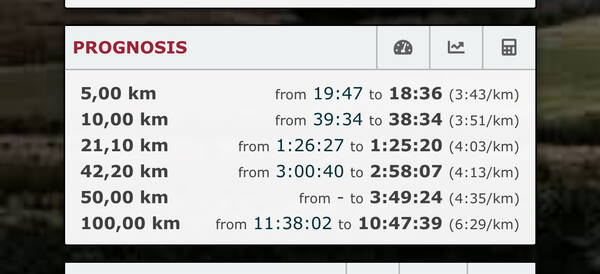
All of a sudden, week five became some sort of tapering week. That’s usually the week before the goal race, where you significantly reduce the training effort so as to not be exhausted on race day. In light of recent events, I’m not so sure that’s super necessary anymore, though. My spiritual brother Chris had just recently achieved Sub-3 in a similar situation – in the middle of a training plan for his first Sub-3. I was inspired by that story. He came from five full weeks of training, had no real rest days, did about 100 km per week, and decided to just give it a go at a training race and surprisingly succeeded. Why shouldn’t I succeed as well?
The mind is the most important tool we have in marathon running. If we think we can do it, we’re half the way there. Chris unlocked it for me. Again, there were also loud voices from people I respect saying I didn’t have it in me and I shouldn’t even try. But I’m glad I didn’t listen to them. That’s another important learning:
Listen to the people who believe in you, even if that’s just yourself.
Back to “tapering” week. While I decided to reduce the efforts, I didn’t reduce them by much. There was still a big Zwift session (on Wednesday this time), I did the 3:00 minute running intervals, but just 6 repeats instead of 8, and two days before the race I crammed a couple kilometers of race pace into an easy run. Then I hopped into the train going south to see where this leads.

⚡ Bienwald Marathon Race
This marathon probably doesn’t ring a bell, but in certain circles, it does. It’s one of the oldest marathon races in Germany, going on since 1976, and it’s known to be one of the fastest races in the country. There were years when more than half of the participants reached Sub-3 and the finish line cut-off time was 3:30 hours. I must add that before the marathon running boom reached the general public, the average finishing times were a lot faster everywhere, but still, the town of Kandel achieved some reputation.
It’s mainly because of these factors it’s so fast:
- The course is nearly completely flat. There are no hills worth mentioning.
- It’s all on asphalt, the vast majority of it in excellent shape.
- Most of the roads are lined with huge trees that catch much of the wind, which is often minimal to begin with.
- Because of these facts, the race attracts ambitious amateurs who can run fast as well.
- Pace runners are carefully selected and happy to provide the guidance.
The people living in the area are proud of the race and happy to volunteer and give you a sense of welcoming, which is also important. I heard about the race first when my friend Michael Mankus mentioned it a few years ago as a great one to go for a personal best, and he definitely was correct. It also helped that Philipp and Karsten, two running buddies, had signed up for the same race, meaning we could spend some time together.
The race has a familiar feeling to it even though I’ve never been here before. You feel welcome right away, it’s all done in such a loving way. A multi-purpose hall was the center of attention, a handful tents outside sold running related gear, and many fit-looking runners roamed the area. It all felt like a good place to be.
After the usual pasta dinner and a good night of sleep, I was very keen to find out how far these five focused weeks of smart training really got me.
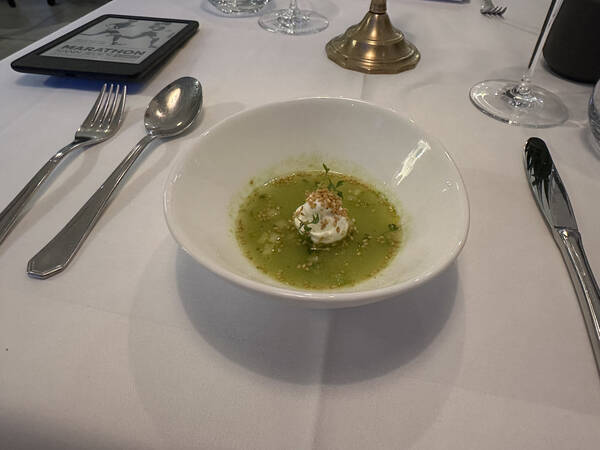
🏃 Race Day!
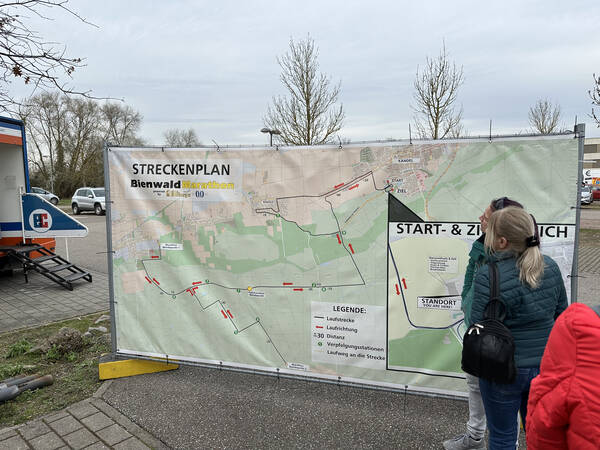
Talking down my nervous excitement with Karsten while sharing the half hour train from Karlsruhe to Kandel really helped. At the race center, we met Philipp, who was well prepared and again showed no signs of feeling any of the cold 5°C (40F) weather on his skin at all, just like at Boston Marathon which we did together last year.
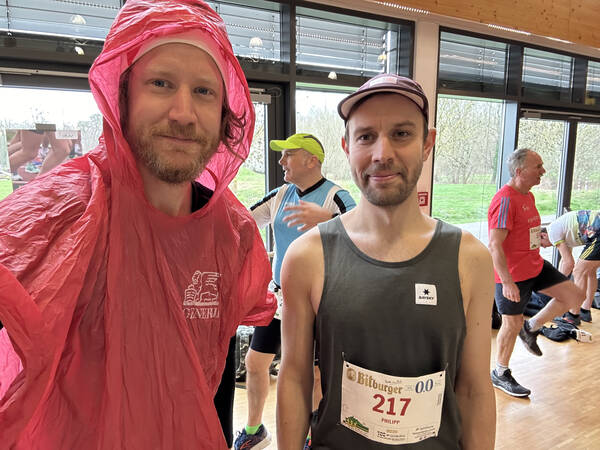
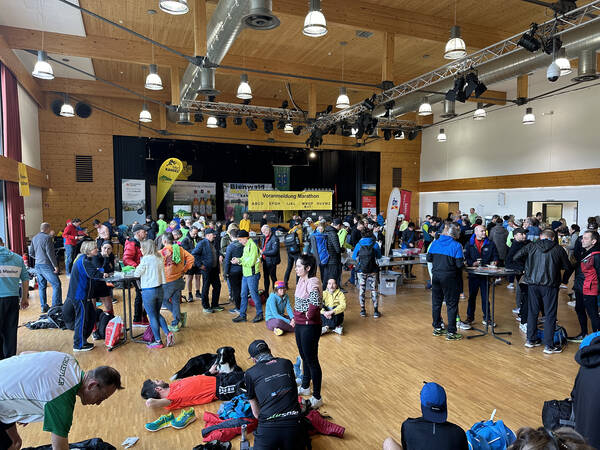
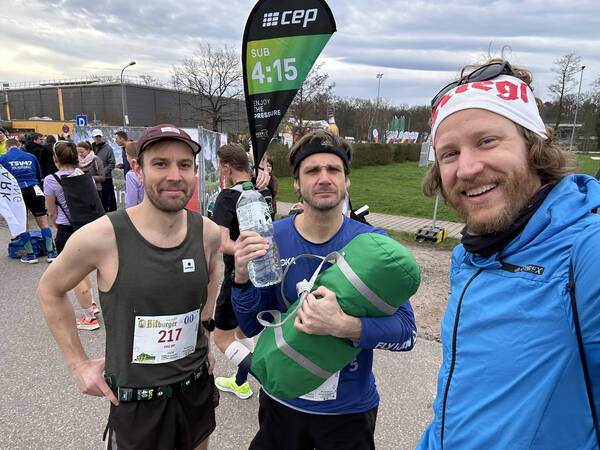
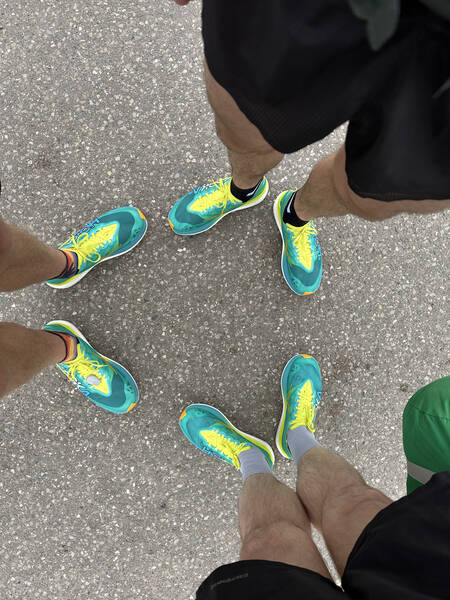
I was especially happy to see that today’s Sub-3 pacers had shown up and looked like they were up to the task. If they did a good job, that’s a huge help. In retrospect I am convinced I would have reached the Sub-3 goal back at Hamburg Marathon 2022 if there had been pacers whose job it is to pull people towards the finish line in 41 seconds less than I took in the end. Today I would get the chance to find out if that guess was true.
Philipp and Karsten are both faster runners, so we wished each other good luck and moved into the crowd in front of the starting line at our respective time goal groups. Karsten wanted to go for a 2:39h personal best today while Philipp had a 2:49h goal in mind.
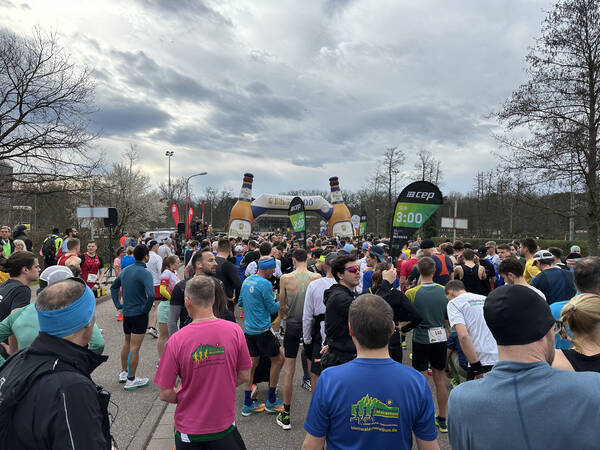
As always, these few minutes are filled with nervous excitement on everyone’s faces. I love this focussed atmosphere. The music selection was not too bad, too, and the mandatory race official’s speech not too long. I’m doing my last few stretching moves right behind the two 3:00h flag carrying pacers. We’re all ready.
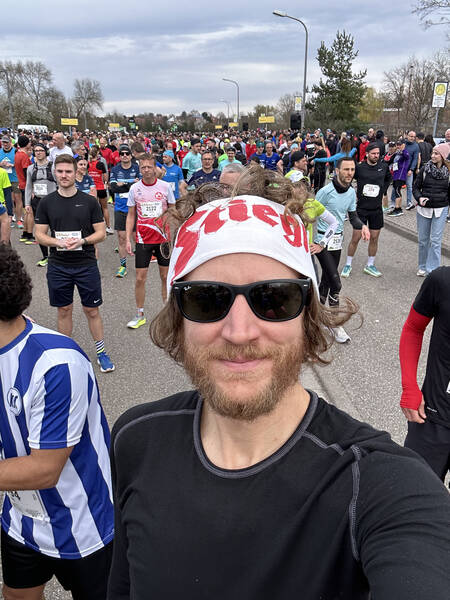
🔫 Start of Bienwald Marathon 2024
Let’s do this! Here comes the moment of truth, a three-hour long moment.
The pacers immediately go up to speed. The crowd is big, my best guess is there were about 1,500 combined half and full marathon participants. The half marathon shared the same route for the first 15 or so kilometers, and also the same starting time. And they had their own pacers. The 1:30h flag carriers were right next to the ones I was watching carefully, so the crowd here was big. It’s wasn’t too bad, though, there was enough room for everyone and I didn’t lose sight of them.
Right away, I notice the pace feels good to me, and, while challenging, it’s not too much of an effort. That’s a relief, because I haven’t done much race pace running, as you’re aware! I was nearly relaxed. Before the race I decided to put my heart rate measurement onto my COROS watch. Most of the time I don’t do that because it can mess with your head. But since I saw today as an experiment, it could be of use, I figured. Quite quickly, my heart rate reached 80% of the max, which is even a bit less than what’s a normal full marathon effort. Great!
Conditions were staying highly favorable, cloudy skies at 10°C / 50F, no rain, no wind, no changes. During the first kilometers I checked my watch quite often to find out if the pacers were actually on point, and they were doing their job perfectly. This is like a lab test! I can just stay inside the large group of runners and make use of the slipstream like Kipchoge did at his 1:59:40 record lab marathon in Vienna.
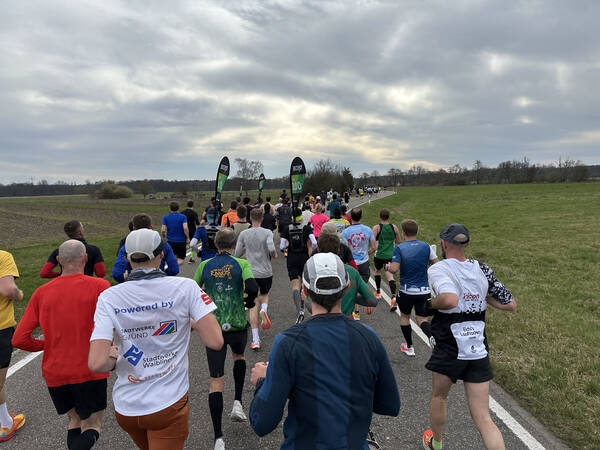
Even though my pair of Hoka Rocket X2 shoes was fairly new, it also turned out to be absolutely perfect for me. Super light and fast carbon plated ones, but still comfortable. All in all, so far there was nothing at all in the negative area. Preparations and luck came together like we’re all always hoping for.
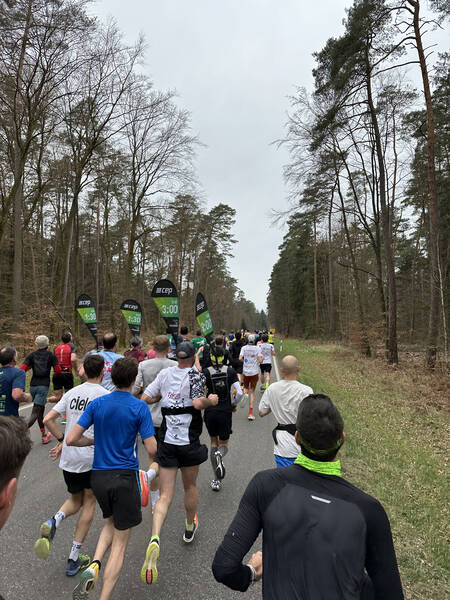
After around one third of the way, 14 km / 8.7 mi, one hour in, the half marathon warriors left us to turn back towards the finish line while our route led us more deeply into the forrest that is Bienwald. High trees line the streets on both sides, catching all the winds. Right at that moment when the groups split apart, we were suddenly just a tiny group. One of the two pacers looked around and counted: “Okay we’ve got six runners left.” – I being one of them. Our group also included the first woman. I was a bit surprised by that, because my impression was that the race is fairly popular with faster runners. Apparently it’s still a small club of people who knows about it. I could still make very good use of the pacers and other runners creating the aero arrow for me to follow.
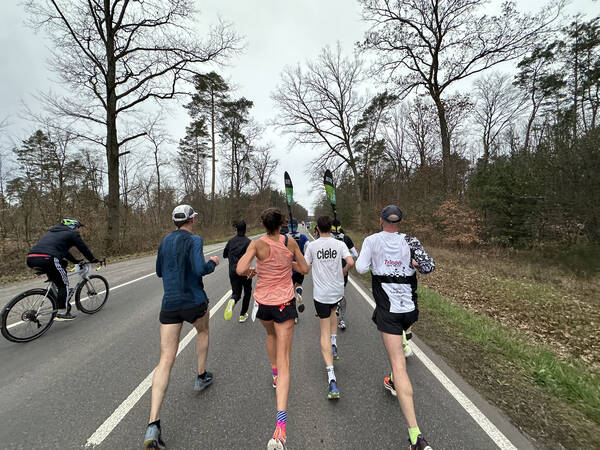
🍭 Marathon Race Nutrition
This has been one of the areas to which I paid special attention leading up to the race. I’ve even started a WhatsApp group to discuss experiments and learnings in this carb-heavy topic. One of the main reasons being that science isn’t individual enough yet to help us find out the perfect balance between monosaccharides like glucose and fructose, disaccharides like plain table sugar, and polysaccharides like maltodextrin, depending on the type of work we’re about to do and how well our digestive systems can absorb and utilize them.
There’s just one way to solve this: Go experimenting!
I won’t go into much detail here, but one of the lessons we learned in our group was that it really is very individual. The carb mix which works for one person might give the other stomach distress and vice versa. I was doing very well with mixes made of 80% maltodextrin and 20% glucose, but no fructose. But when I substituted this with plain old maple syrup, or the delicious elderflower syrup my-mother-in-law regularly makes for me, both of which having a 50/50 glucose to fructose ratio and no polysaccharides, I felt fine and got stuff done, too. The one thing that wasn’t great for me, was too much of maltodextrin at the same time. More than 60 or 70g in one go gave me distress, and more than that per hour also led to problems. Many people currently say that “more is more”, because it’s plainly just quickly available energy you’re giving your body. But absorption has its limits, too.
I personally took away the lesson that eating as much as you feel like instead of as much as you physically can is better.
Today, I didn’t bring my homemade mix, but instead, the tried and tested Maurten brand gels, which emphasize maltodextrin. The big new 65g gels are perfect for me and contain 40g of the important carbs. I had my first after about an hour and it hit the spot. I felt fresh and keen to continue.
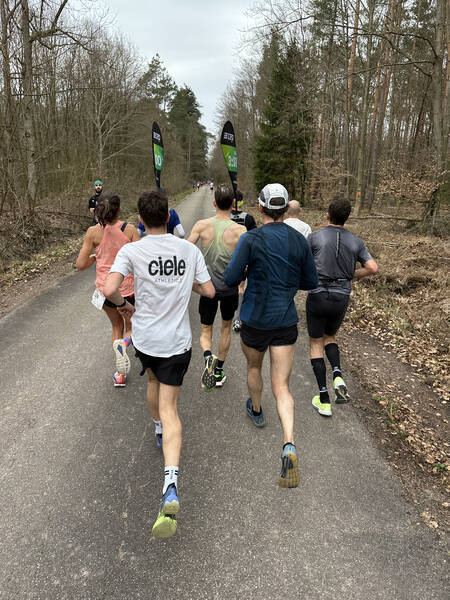
The course provided two 180 degree turning points during which you can see the faster runners coming towards you first, and then, after turning yourself, see the slower runners behind you. It’s always nice to get a general impression on how the field is structured. The leading man was far ahead, and there weren’t many runners between him and us Sub-3 people, maybe a few dozen. Karsten came by, followed by Philipp a few minutes later. We all were happy to see each other doing well and shouted words of encouragement.
Before the second turn-around I counted the runners and Karsten was in 4th place! I told him so, but he knew already. The guy is fast – and has an awesome Instagram.
The middle part of the race went very well for me, too. I had no energy lows at all, my heart rate still at the 80% sweet spot, the pace was still perfectly stable thanks to an incredible job done by the pacers, and my spirit was still high. It was too early to start thinking about actually pulling this Sub-3 off today, so I just looked ahead, stayed in the moment, and kept on rolling.
By the way, the aid stations here were managed really well, too. I didn’t make much use of them, just had an occasional half cup of water. Our pacers always announced them a few hundred meters ahead and we changed our arrow formation into a line so we could all take something after one another without slowing down too much. Then we reassembled into the arrow. This worked like a choreography, it was beautiful.
Almost exactly after two thirds of the race, two hours in, 28 km / 17.3 mi, I felt like a second gel. I was carrying four, just to be safe. That second gel gave me exactly what I wanted. The perceived effort was harder now, but still quite manageable. By now I was in a tunnel, mentally. Looking straight forward, not letting much of the surroundings into my brain, just pure focus on the running. This is the meditative state you can achieve during running which I like so much.
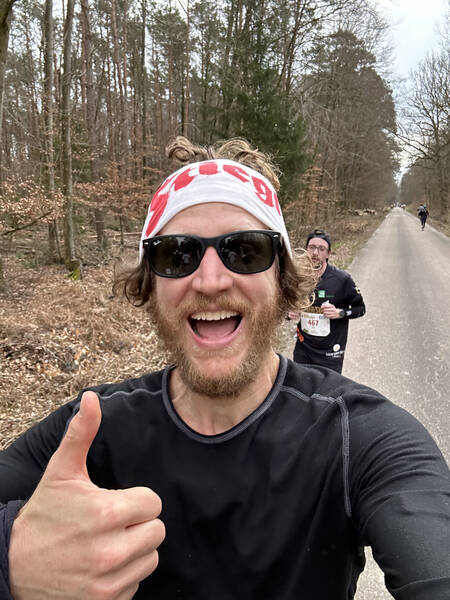
Our group had a few personell changes. We lost a few who couldn’t go the pace all the way, and we caught some who were in front but then fell back to our pace and stayed on. The size of the group stayed somewhere between six and ten.
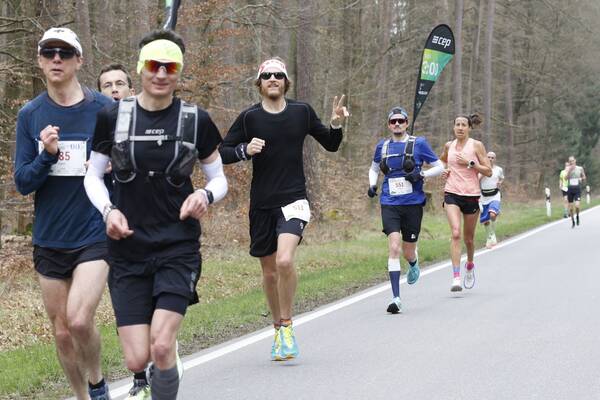
Starting at 32 km / 20 mi, I counted the kilometers and did the usual mental tricks like saying my mantras in my head. You can do this, it’s possible. I was sure not to forget how quickly the target could be missed. It’s all about the seconds in the end, as I was very aware since my 3:00:40 marathon two years ago.
There was no struggle yet, though.
At 37 km / 23 mi, something odd happened.
How will this play out? Would you like more stories like these?
Subscribe to the free newsletter here:
You’ll never ever receive spam email and you can unsubscribe at any point.
-
This was one of the best articles I've read so far in telling about a race. I couldn't put it down. Your details were so awesome. You made New York just come alive.
-
Great review, enjoyed reading it and recognize lots off related subjects and hurtles. I’m amazed by all your running and races well done.
-
Great article! I've read so many long blogs only to get bored in the middle as I suffer terribly from ADD and move on to other things. Yours has been one of few that held my attention all the way to the end.
-
Your good humor and ease in telling stories make this blog a really cool space. Nice review.
-
Amazing effort Tim, well done! Thank you for taking the time to write down your thoughts, feelings and memories from the event. There’s always something to learn from your posts and this one was no exception!! Another cracking read.
-
What a ride! Surely the race, but also reading about it. Thanks for taking the time to write up such a detailed report, almost feel like I was there.
Our group was a bit ahead of pace, coming up towards a 2:59:10 finish, meaning we could still make it even when slowing down considerably now. Some runners were at the end of their abilities and the pacers noticed. The pacers were doing their job so well that they tried to catch those and still get them to that 2:59:59 goal time. This meant that our group split apart now and since there’s just a 5k left now, I decided to go ahead and overtake.
This felt incredible. I’m in front of the Sub-3 pacers so far into the race! It’s becoming real.
No slipstream anymore, but I could manage and even increased the pace slightly. Heart rate is up at 85% now, still fine. This requires more carbs but I had enough energy in me and didn’t want another gel. At 39 km / 24.2 mi, I began to exhale audibly. The strain was there, no hiding possible or necessary. You owe it to the marathon to give it your best shot, I think. Can I maybe even go below 2:59:00? I do regular 4:05-4:10 minute kilometers now, but more isn’t possible.
The noise of the finish line party is increasing. Kilometer signs 40, 41, then we enter the outdoor track of the sports center, a standard 400 meter one, which provides the last few hundred meters to us. Those definitely feel longer than 400 meters! Karsten and Philipp are here, greeting me enthusiastically. It’s real now. Really real.
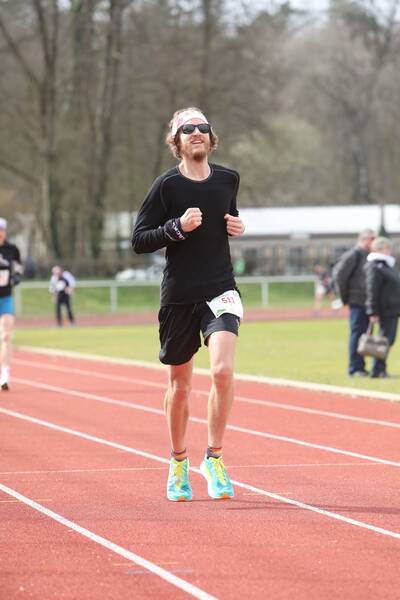
🏁 Finish Line. 2:58:44.
I did it. What a moment. It really worked!
Quite a bit ahead of the pacers and the first woman I finish this fastest marathon of my life. The 84th one, to be exact. Four years of focus, three failed attempts, and now, I’ve got it down. I know how it’s done. I solved the puzzle and won the game.
Man this feels good.
Through experimentation, advice from lots of smart people and books, I found the way which works best for me personally. It doesn’t have to be the hardcore approach, you don’t need to be always riding on what’s the edge of possibility. There are smarter ways which can surprise you in how effective they are.
I hope I’ve given you a glimpse into how this can be done and some inspiration on what you can try as well, to see if it works for you, too!
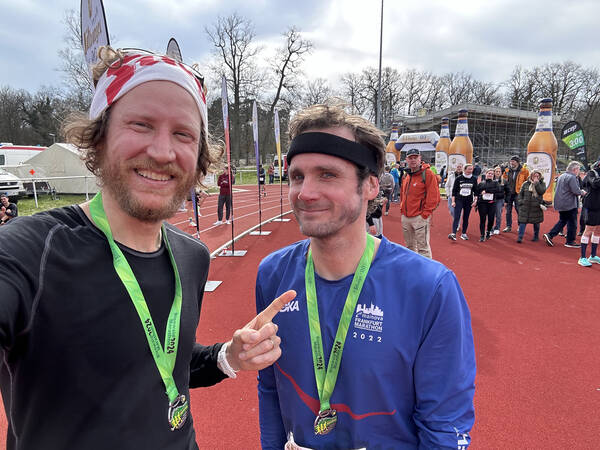
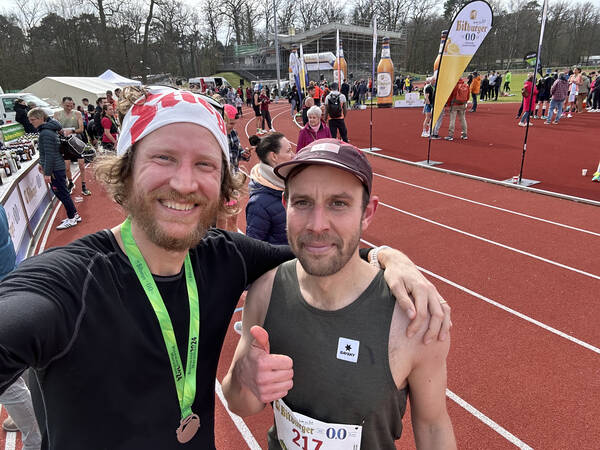
For now, I’m bathing in endorphins. Proud of myself and how I’ve handled all of this, for sure. Talking to and celebrating with Philipp and Karsten is great. Both have unfortunately missed their respective goal times by just a few minutes but didn’t feel too bad about it. I approach the two pacers and give them my heartfelt thanks – they were a huge factor in making this possible today. My plan is to do some slower marathon pacing for others trying to reach their goals in the future, too.
After a cold shower, Karsten and I enjoyed the celebrations for the winners while having a slice of vegan cake. Karsten came in 6th place overall in the end.
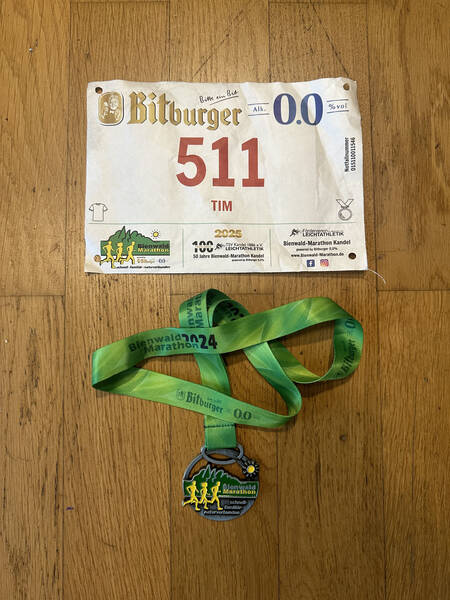
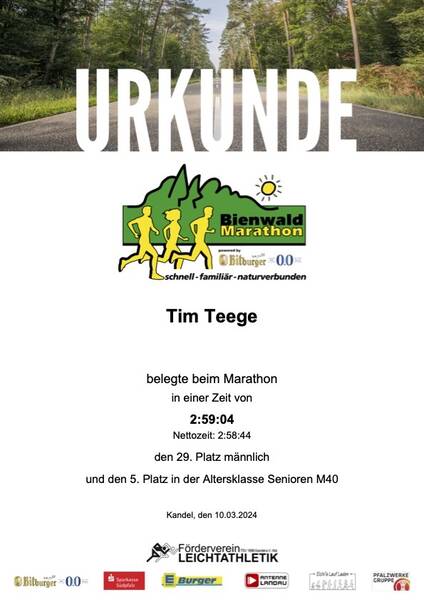
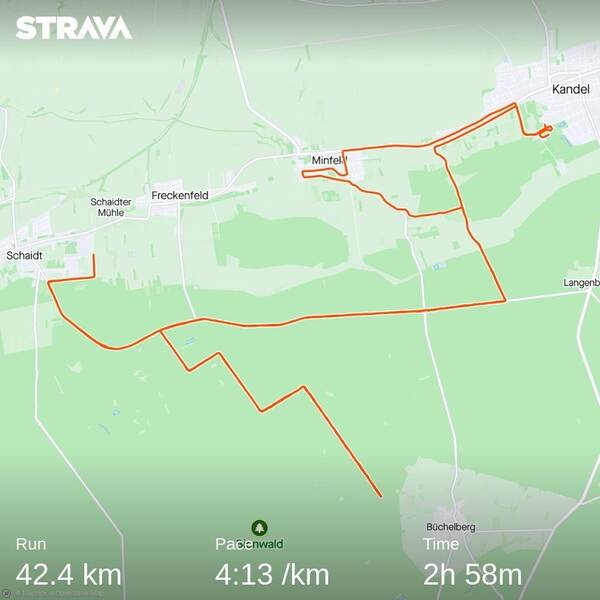
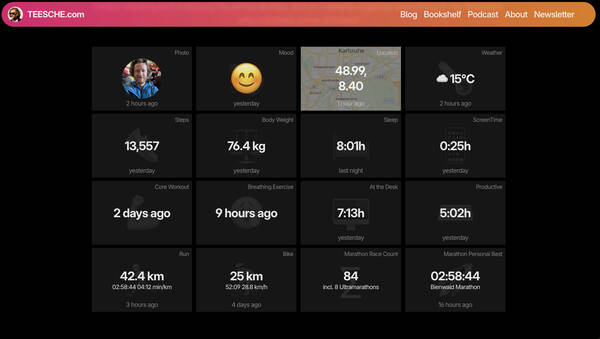
🪞 Reflections on Reaching Such a Big Audacious Goal
It’s good this isn’t the first time for me that I’ve reached a goal I’ve been working towards for many years, so I know the pitfalls. Looking back, most of my major achievements like my first marathon ever or completing the 28 EU capital marathons left me with positive feelings afterwards. It was only my first-ever long distance triathlon race, the IRONMAN Copenhagen in 2015, where I found myself in a mental hole afterwards, not knowing where to go next and wondering if that’s all there is. I think that’s because the long distance triathlon had a much more symbolic attachment in my mind than the other things I did.
I’m happy I’ve made that experience in Copenhagen, though. It taught me a valuable lesson. It’s always the journey that counts and never the destination. We reach some milestones on the way, but we’re always moving and there are new milestones which we are free to make up as we go along. I think that’s comforting and helpful. Settings goals like these gives us something measurable to work towards and to celebrate when reached, but the years leading up to reaching them are the ones which should be enjoyed first and foremost.
I knew all of that before going Sub-3 and this helped me to be very conscious about today’s result. It made me happy I’ve come this far – my former self would never have believed that I had this in me. A lot has gone right in my life so far, and I wonder and am curious about where I can take this.
➡️ What’s Next?
One of the best aspects of reaching a big audacious goal is asking myself this question. I love thinking way ahead and making plans, even before I reach the stepping stones on the way there. It’s fun! And if it turns out the goals need to be scrapped, like I’ve done a few times in the past, that’s just as well – another opportunity to make more new plans!
My short term focus remains Hamburg Marathon on April 28th, seven weeks after Bienwald. I am keen to go Sub-3 for a second time, together with my friend Mathias, whose first Sub-3 it would be. If I can manage to get myself into an even better position and become faster still, I might be able to help Mathias by way of pacing and being a human wind shield for him.
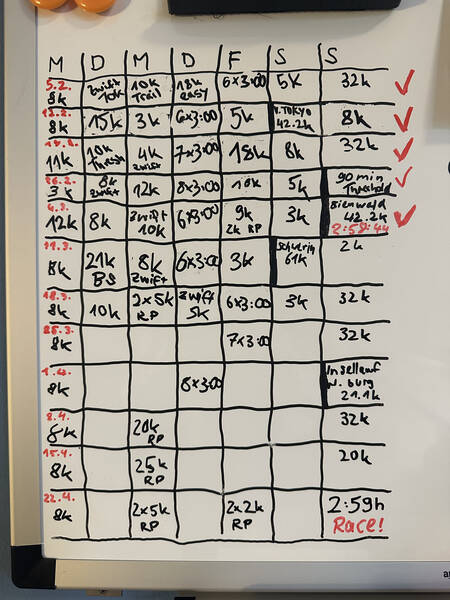
Until then, I’ve already enjoyed a short 61k ultramarathon around pretty Schweriner See a week after Bienwald and I plan to do an official half marathon PR on April 7th at a race in southern Hamburg. 1:23:XX would be an amazing result.
The rest of this year looks great already as well. More big ultramarathons during summer, more city marathons later, and a trip to Chicago Marathon in fall.
Will I go for an even faster marathon?
The next meaningful marathon finish time would be a 2:45h, I think. It’s a huge step up, but I don’t feel like aiming for “just” 2:55h or Sub-2:50h, it seems too small, although it actually isn’t. So the question is, do I think I have 2:45h in me one day, and would I enjoy the way to get there?
Right now, the answer is probably no. I think I could do it within a few years, there’s still untapped potential. I’m not maxed out. Training for it is fun, but it also requires focus on asphalt instead of mountains. I love mountains, too! To be frank, I like to be more flexible and be able to do crazy run stuff without the fear of jeopardizing a strict training routine, too. It’s possible to do both, of course. It would just take a bit longer, which is no problem.
I do think I will go for more Sub-3 marathon races in the future. “Just” Sub-3. That training requirement seems very doable to me and doesn’t hurt my fun excursions during the rest of the year at all. If anything, it benefits from it.
But I’m just as excited to see if my thoughts on this change at some point and what my new ideas will be.
It’s an open field and everything is optional.
How do you feel after reading this?
This helps me assess the quality of my writing and improve it.
Leave a Comment